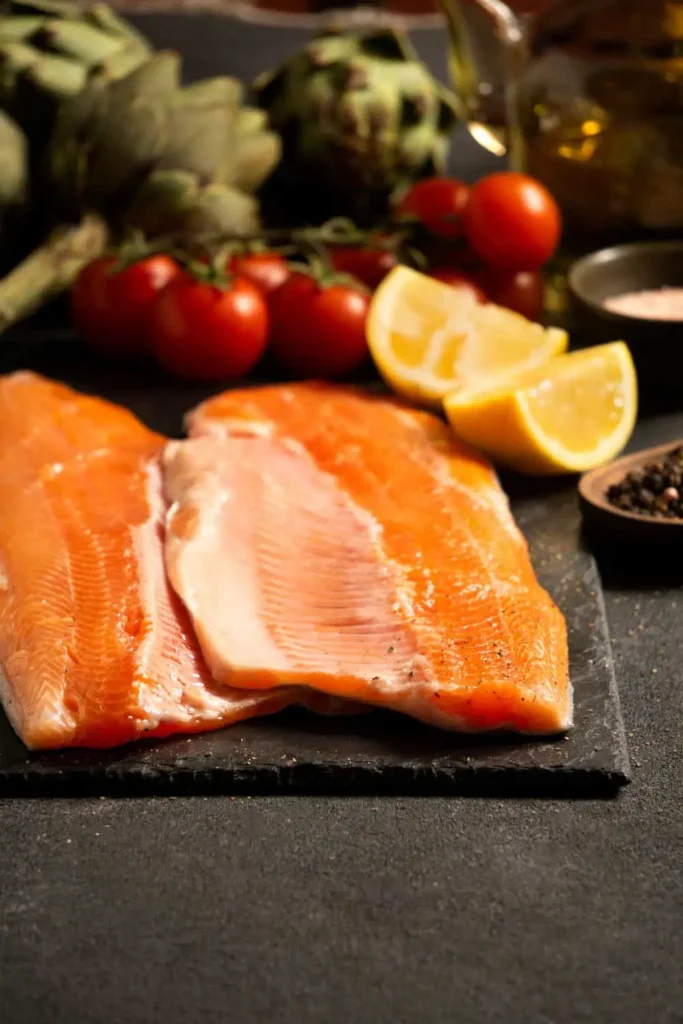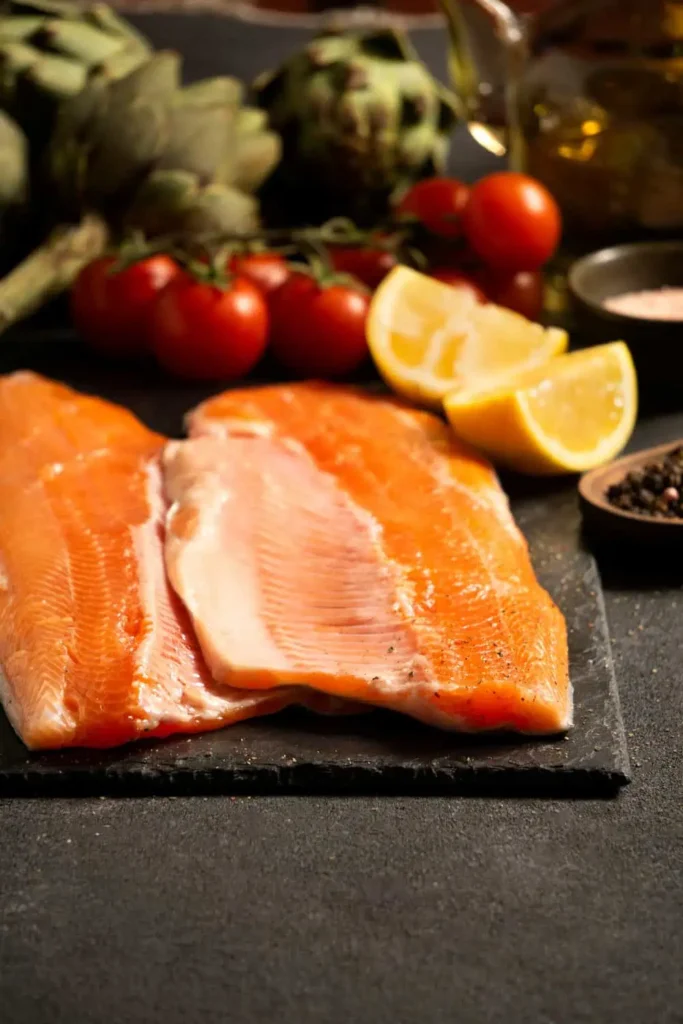Salmon soup is a delightful dish that can be both comforting and nutritious. However, many people find that the fishy taste of salmon can be overwhelming. If you’re wondering, “How do you make salmon soup less fishy?”, you’re not alone. In this comprehensive guide, we’ll explore various techniques, tips, and tricks to help you create a delicious salmon soup that minimizes that strong fish flavor.
Understanding the Fishy Flavor in Salmon
Before diving into solutions, it’s essential to understand why salmon can taste fishy. The fishy flavor often comes from:
- Oxidation: When fish is exposed to air, it can develop a strong odor.
- Fat Content: Salmon is a fatty fish, and the oils can contribute to a stronger flavor.
- Freshness: Older fish tends to have a more pronounced fishy taste.
By addressing these factors, you can significantly improve the flavor of your salmon soup.
The Science Behind Fishiness
The fishy taste in salmon is primarily due to the presence of certain compounds, such as trimethylamine (TMA). When fish begins to spoil, bacteria break down the fish’s natural compounds, leading to the production of TMA, which is responsible for that strong odor. Fresh fish has lower levels of TMA, which is why freshness is crucial in reducing the fishy taste.
Tips to Make Salmon Soup Less Fishy
1. Choose Fresh Salmon
The first step in reducing the fishy taste is to start with fresh salmon. Look for:
- Bright, vibrant color: Fresh salmon should have a rich color, whether it’s pink, orange, or red.
- Firm texture: The flesh should be firm to the touch and bounce back when pressed.
- Mild smell: Fresh salmon should have a clean, ocean-like scent, not a strong fishy odor.
How to Select Fresh Salmon
When shopping for salmon, consider the following tips to ensure you’re getting the freshest fish possible:
- Buy from reputable sources: Purchase salmon from trusted fishmongers or grocery stores known for their quality seafood.
- Ask about the catch date: If possible, inquire about when the salmon was caught. The fresher, the better!
- Look for sustainability: Opt for wild-caught salmon or sustainably farmed options to ensure quality and environmental responsibility.
2. Soak the Salmon
Soaking salmon in milk or a mixture of water and vinegar can help neutralize the fishy flavor. Here’s how to do it:
- Milk Soak: Submerge the salmon in milk for 30 minutes before cooking. The proteins in milk bind to the compounds that cause the fishy taste.
- Vinegar Soak: Mix one part vinegar with three parts water and soak the salmon for 15-20 minutes. Rinse thoroughly afterward.
Benefits of Soaking
Soaking salmon not only helps reduce the fishy taste but also can improve the texture of the fish. The soaking process can make the salmon more tender and juicy, enhancing the overall quality of your soup.
3. Use Aromatic Ingredients
Incorporating aromatic ingredients can help mask the fishy flavor. Consider adding:
- Herbs: Fresh herbs like dill, parsley, or cilantro can brighten the dish.
- Spices: Use spices such as cumin, coriander, or paprika to add depth.
- Citrus: Lemon or lime juice can cut through the fishiness and add a refreshing flavor.
Popular Aromatic Combinations
Here are some aromatic combinations that work well in salmon soup:
- Dill and Lemon: A classic pairing that complements the flavor of salmon beautifully.
- Cilantro and Lime: Adds a fresh, zesty kick that can elevate the dish.
- Garlic and Thyme: Provides a savory depth that balances the fishy taste.
4. Add Vegetables
Adding vegetables not only enhances the nutritional value of your salmon soup but also helps balance the flavors. Some great options include:
- Onions: Sauté onions until they are translucent to add sweetness.
- Garlic: Fresh garlic can add a robust flavor that complements the salmon.
- Carrots and Celery: These vegetables add texture and sweetness, helping to mask the fishy taste.
Vegetable Combinations for Salmon Soup
Consider these vegetable combinations to create a well-rounded soup:
- Classic Mirepoix: A mix of onions, carrots, and celery forms a flavorful base for your soup.
- Mediterranean Twist: Add bell peppers, zucchini, and tomatoes for a vibrant, colorful dish.
- Asian-Inspired: Incorporate bok choy, mushrooms, and green onions for a unique flavor profile.
5. Incorporate Broth or Stock
Using a flavorful broth or stock as the base for your soup can significantly improve the overall taste. Consider:
- Chicken or Vegetable Broth: These can add richness and depth to your soup.
- Fish Stock: If you prefer a seafood base, use a high-quality fish stock that is not overly fishy.
Making Your Own Broth
If you have the time, making your own broth can elevate your salmon soup to the next level. Here’s a simple recipe for homemade fish stock:
Ingredients:
- 2 pounds of fish bones (preferably from white fish)
- 1 onion, quartered
- 1 carrot, chopped
- 1 celery stalk, chopped
- 2 cloves of garlic, smashed
- 1 bay leaf
- 10 cups of water
- Salt and pepper to taste
Instructions:
- In a large pot, combine all ingredients and bring to a boil.
- Reduce heat and simmer for 30-45 minutes.
- Strain the stock through a fine-mesh sieve, discarding solids.
- Season with salt and pepper to taste.
6. Use Cream or Coconut Milk
Adding cream or coconut milk can help mellow the fishy flavor and create a rich, creamy texture. Here’s how to incorporate them:
- Heavy Cream: Stir in heavy cream towards the end of cooking for a luxurious finish.
- Coconut Milk: For a different flavor profile, use coconut milk, which adds creaminess and a hint of sweetness.
Creamy Salmon Soup Recipe
Here’s a simple recipe for a creamy salmon soup that minimizes the fishy taste:
Ingredients:
- 1 pound fresh salmon, cut into chunks
- 1 onion, diced
- 2 cloves garlic, minced
- 2 carrots, diced
- 2 celery stalks, diced
- 4 cups vegetable or chicken broth
- 1 cup heavy cream or coconut milk
- 2 tablespoons fresh dill, chopped
- Salt and pepper to taste
- Juice of 1 lemon
Instructions:
- In a large pot, sauté onions, garlic, carrots, and celery until softened.
- Add the broth and bring to a boil.
- Reduce heat and add the salmon. Simmer for 10 minutes.
- Stir in the cream or coconut milk, dill, and lemon juice. Season with salt and pepper.
- Serve hot, garnished with additional dill if desired.
7. Cook with Wine
Cooking with white wine can enhance the flavor of your salmon soup while reducing the fishy taste. The acidity in wine helps to balance the flavors. Here’s how to do it:
- Deglaze the Pan: After sautéing your vegetables, add a splash of white wine to deglaze the pan, scraping up any flavorful bits.
- Simmer with Wine: Add wine to the broth and let it simmer to allow the flavors to meld.

Choosing the Right Wine
When selecting a wine for your salmon soup, consider these options:
- Sauvignon Blanc: A crisp, acidic wine that pairs well with fish.
- Chardonnay: A fuller-bodied wine that adds richness to the soup.
- Pinot Grigio: A light, refreshing option that complements the flavors without overpowering them.
8. Experiment with Seasonings
Seasonings play a crucial role in enhancing the flavor of your salmon soup. Here are some ideas to consider:
- Salt and Pepper: Always season your soup to taste, as this can significantly impact the overall flavor.
- Smoked Paprika: Adds a smoky depth that can complement the salmon beautifully.
- Cayenne Pepper: For those who enjoy a bit of heat, a pinch of cayenne can elevate the dish.
9. Use Acidic Ingredients
Incorporating acidic ingredients can help cut through the fishy flavor and brighten the overall taste of your soup. Consider adding:
- Tomatoes: Fresh or canned tomatoes can add acidity and sweetness.
- Vinegar: A splash of vinegar (such as apple cider or red wine vinegar) can enhance the flavor profile.
- Citrus Zest: Grated lemon or lime zest can add a burst of freshness.
10. Serve with Complementary Sides
The sides you serve with your salmon soup can also influence the overall experience. Consider pairing your soup with:
- Crusty Bread: A slice of fresh bread can help soak up the delicious broth.
- Salad: A light, refreshing salad can balance the richness of the soup.
- Rice or Quinoa: Serving the soup over rice or quinoa can add texture and heartiness.
Additional Techniques to Reduce Fishiness
11. Use Potatoes
Adding potatoes to your salmon soup can help absorb some of the fishy flavors while adding heartiness to the dish. Potatoes are excellent at soaking up flavors, and they can provide a creamy texture when cooked down.
How to Use Potatoes:
- Diced Potatoes: Add diced potatoes to the soup early in the cooking process so they can cook through and absorb flavors.
- Mashed Potatoes: For a creamier texture, you can mash some of the potatoes in the soup before serving.
12. Incorporate Other Proteins
If you find that salmon is too fishy for your taste, consider mixing in other proteins. This can help balance the flavors and reduce the overall fishiness of the soup.
Protein Options:
- Chicken: Shredded chicken can add a different flavor profile and texture.
- Shrimp: Adding shrimp can provide a sweet, delicate flavor that complements the salmon.
- Tofu: For a vegetarian option, tofu can absorb the flavors of the soup while providing protein.
13. Use a Flavorful Base
Starting with a flavorful base can set the tone for your salmon soup. Consider using:
- Tomato Base: A tomato-based broth can add acidity and sweetness, helping to mask the fishy flavor.
- Coconut Curry Base: A coconut curry base can provide a rich, aromatic flavor that pairs well with salmon.
14. Add Nuts or Seeds
Incorporating nuts or seeds can add a unique texture and flavor to your salmon soup. They can also help absorb some of the fishy taste.
Nut and Seed Options:
- Pine Nuts: Toasted pine nuts can add a rich, buttery flavor.
- Sesame Seeds: Toasted sesame seeds can provide a nutty crunch.
- Almonds: Sliced or slivered almonds can add a delightful texture.
15. Use Fermented Ingredients
Fermented ingredients can add depth and complexity to your salmon soup while helping to balance the fishy flavor. Consider adding:
- Miso Paste: Miso can add umami and richness to the soup.
- Kimchi: Adding kimchi can provide a spicy, tangy flavor that complements the salmon.

Frequently Asked Questions (FAQs)
How do you make salmon soup less fishy?
To make salmon soup less fishy, use fresh salmon, soak it in milk or vinegar, add aromatic ingredients, and incorporate vegetables and flavorful broth.
What can I add to salmon soup to enhance the flavor?
You can enhance the flavor of salmon soup by adding herbs, spices, citrus, and vegetables like onions, garlic, carrots, and celery.
Is it necessary to soak salmon before cooking?
Soaking salmon in milk or vinegar is not necessary, but it can help reduce the fishy taste, making the final dish more enjoyable.
Can I use frozen salmon for soup?
Yes, you can use frozen salmon for soup. Just ensure it is properly thawed and drained before cooking to minimize any fishy flavor.
What are some good side dishes to serve with salmon soup?
Some great side dishes to serve with salmon soup include crusty bread, a fresh salad, or roasted vegetables.
How can I store leftover salmon soup?
Store leftover salmon soup in an airtight container in the refrigerator for up to 3 days. Reheat gently on the stove, adding a splash of broth or water if needed.
Can I freeze salmon soup?
Yes, you can freeze salmon soup. Allow it to cool completely, then transfer it to a freezer-safe container. It can be stored for up to 3 months. Thaw in the refrigerator before reheating.
What types of salmon are best for soup?
Wild-caught salmon, such as sockeye or coho, is often preferred for its flavor and texture. However, farmed salmon can also work well if it’s fresh.
How do I know when the salmon is cooked in the soup?
Salmon is cooked when it flakes easily with a fork and has turned opaque. Be careful not to overcook it, as it can become dry.
Can I use canned salmon for soup?
Yes, canned salmon can be used in soup. It’s a convenient option, but be sure to choose high-quality canned salmon to ensure the best flavor.
What are some common mistakes to avoid when making salmon soup?
- Using old salmon: Always use fresh salmon to avoid a strong fishy taste.
- Overcooking the salmon: This can lead to a dry texture and intensified fish flavor.
- Not seasoning enough: Proper seasoning is key to balancing flavors.
Conclusion
In conclusion, if you’re asking, “How do you make salmon soup less fishy?”, there are several effective strategies to enhance the flavor of your dish. By choosing fresh salmon, soaking it, using aromatic ingredients, and incorporating vegetables and flavorful broths, you can create a delicious salmon soup that everyone will love.
Experiment with these tips and find the combination that works best for your taste preferences. With a little creativity and the right ingredients, you can enjoy a comforting bowl of salmon soup without the overpowering fishy taste.
Final Thoughts
Cooking is an art, and like any artist, you have the power to create a masterpiece in your kitchen. Don’t be afraid to experiment with different ingredients and techniques to find the perfect balance of flavors in your salmon soup. Whether you prefer a creamy base, a broth packed with vegetables, or a zesty twist, the possibilities are endless.
So, gather your ingredients, put on your apron, and get ready to create a salmon soup that will impress your family and friends. Happy cooking!

